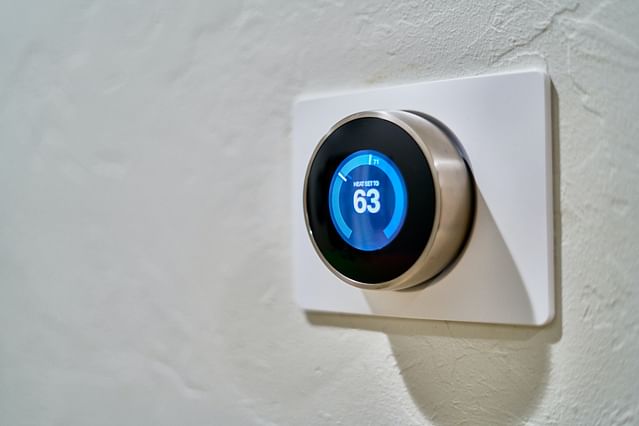
A Beginner's Guide to Smart Thermostats and Energy Savings'
Smart thermostats are one of the most popular and effective ways to create a comfortable and energy-efficient home environment. With a smart thermostat, you can easily control the temperature of your home from your phone or computer, schedule temperature changes to save energy, and set up automatic adjustments based on your daily routines and preferences.
In this beginner's guide, we'll explore the benefits of smart thermostats and energy savings, and walk you through the process of installing and setting up a smart thermostat in your home.
Why Choose a Smart Thermostat?
Smart thermostats are much more than just fancy programmable thermostats - they are intelligent devices that learn from your behavior, adapt to your preferences, and provide insights into your energy use. Here are some key reasons why you should consider a smart thermostat:
Energy Savings: One of the main benefits of a smart thermostat is that it can help you save energy and reduce your heating and cooling bills. By setting up automatic schedules, smart thermostats can typically save up to 23% on heating and cooling costs, according to a report by the U.S. Department of Energy.
Easy Control: With a smart thermostat, you can easily control your home's temperature from anywhere, anytime. Whether you're at home or away, you can adjust the temperature using your smartphone or computer, so you always come home to a comfortable environment.
Comfortable Home: Smart thermostats also provide more precise temperature control than traditional thermostats, which can result in a more comfortable home environment. You can set up different temperature settings for different rooms or zones, and adjust the temperature based on your preferences.
Eco-Friendly: By reducing your energy usage, smart thermostats can also help you reduce your carbon footprint and make your home more eco-friendly. Some models even provide insights into your energy usage, so you can see how your energy-saving efforts are paying off.
How to Install a Smart Thermostat
Now that you know the benefits of a smart thermostat, let's dive into the installation process. While every smart thermostat is different, most models follow a similar installation process. Here are some general steps to follow:
Turn Off Power: Before you begin, turn off the power to your HVAC system at the circuit breaker to avoid any electrical shock or damage.
Remove Old Thermostat: Remove the cover from your old thermostat and disconnect the wires. Then, remove the mounting plate from the wall.
Install New Mounting Plate: Attach the new mounting plate to the wall using the screws provided. Make sure that it's level and secure.
Connect Wires: Connect the wires to your new thermostat according to the manufacturer's instructions. Most models will require you to connect the wires to specific terminals, so make sure to double-check before securing them in place.
Attach Thermostat: Attach the thermostat to the mounting plate and turn on the power. Follow the manufacturer's instructions to connect your thermostat to your Wi-Fi network and set up any desired features or schedules.
Test It Out: Once everything is installed and set up, test out your new smart thermostat by adjusting the temperature and checking the temperature readings.
Tips for Setting Up Your Smart Thermostat
Now that your smart thermostat is installed, it's time to set it up for maximum efficiency and energy savings. Here are some tips to get you started:
Set a Schedule: Use your smart thermostat's scheduling feature to set up automatic temperature adjustments based on your daily routines. For example, lower the temperature during the day when you're at work or school, and increase it in the evening when you're at home.
Use Eco Mode: Many smart thermostats have an "Eco" mode or "Away" mode that will automatically adjust the temperature to save energy when you're not home. Make sure to turn this feature on when you leave for an extended period.
Experiment with Zoning: If your smart thermostat supports it, experiment with setting up different temperature zones for different rooms or areas of your home. This can help you save even more energy and increase your comfort level.
Monitor Your Energy Usage: Many smart thermostats provide insights into your energy usage, so take advantage of this feature to see how your new device is helping you save money and reduce your environmental impact.
Conclusion
Overall, a smart thermostat is a great investment for anyone looking to improve their home's climate control, energy efficiency, and overall comfort level. By following this guide, you should be able to install and set up your new device with ease, and start enjoying the many benefits of a smart home.
Posted on: Jan 19, 2023 Last updated at: Apr 10, 2023